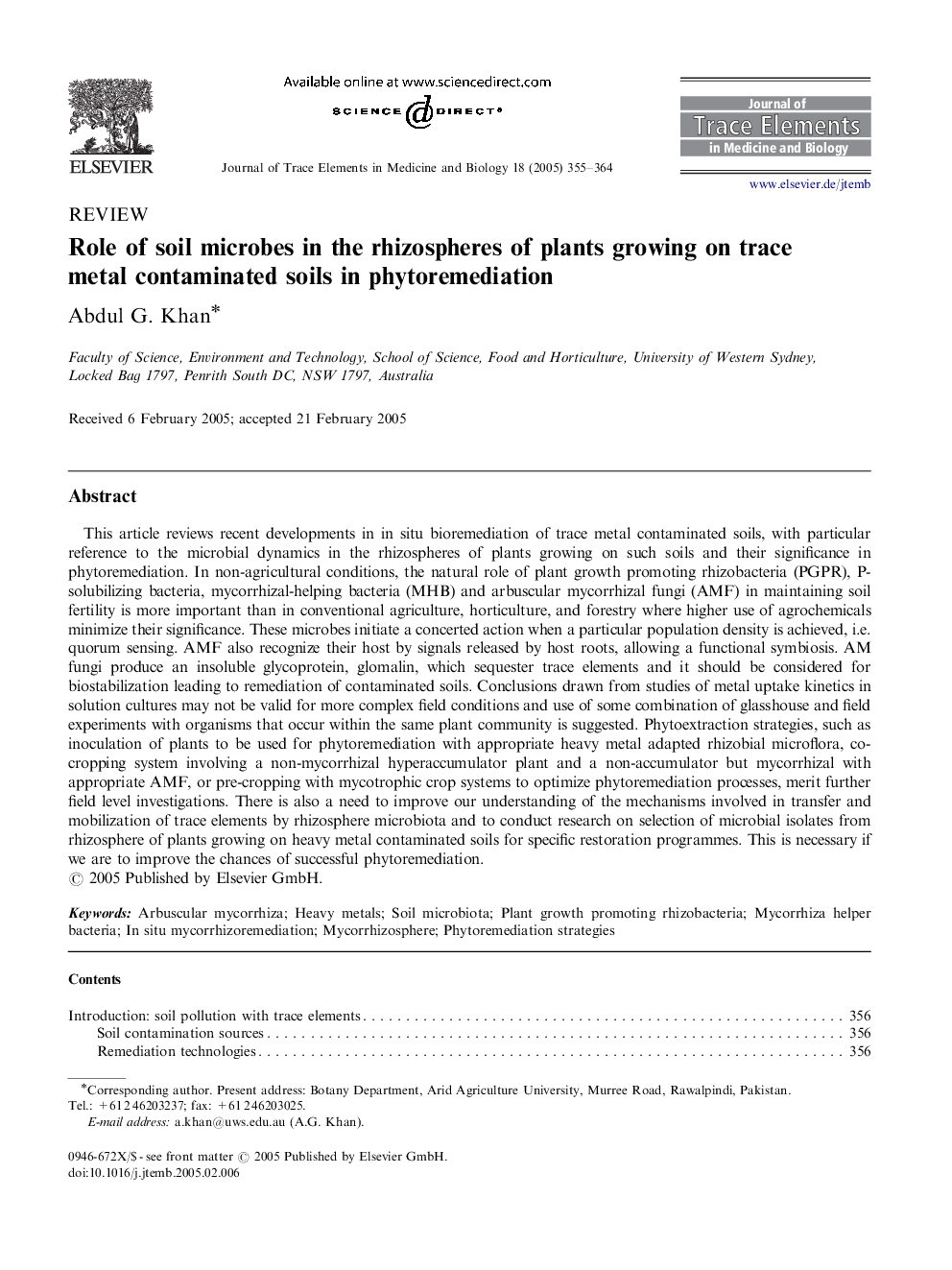| کد مقاله | کد نشریه | سال انتشار | مقاله انگلیسی | نسخه تمام متن |
|---|---|---|---|---|
| 10556766 | 968397 | 2005 | 10 صفحه PDF | دانلود رایگان |
عنوان انگلیسی مقاله ISI
Role of soil microbes in the rhizospheres of plants growing on trace metal contaminated soils in phytoremediation
دانلود مقاله + سفارش ترجمه
دانلود مقاله ISI انگلیسی
رایگان برای ایرانیان
کلمات کلیدی
موضوعات مرتبط
مهندسی و علوم پایه
شیمی
شیمی آنالیزی یا شیمی تجزیه
پیش نمایش صفحه اول مقاله

چکیده انگلیسی
This article reviews recent developments in in situ bioremediation of trace metal contaminated soils, with particular reference to the microbial dynamics in the rhizospheres of plants growing on such soils and their significance in phytoremediation. In non-agricultural conditions, the natural role of plant growth promoting rhizobacteria (PGPR), P-solubilizing bacteria, mycorrhizal-helping bacteria (MHB) and arbuscular mycorrhizal fungi (AMF) in maintaining soil fertility is more important than in conventional agriculture, horticulture, and forestry where higher use of agrochemicals minimize their significance. These microbes initiate a concerted action when a particular population density is achieved, i.e. quorum sensing. AMF also recognize their host by signals released by host roots, allowing a functional symbiosis. AM fungi produce an insoluble glycoprotein, glomalin, which sequester trace elements and it should be considered for biostabilization leading to remediation of contaminated soils. Conclusions drawn from studies of metal uptake kinetics in solution cultures may not be valid for more complex field conditions and use of some combination of glasshouse and field experiments with organisms that occur within the same plant community is suggested. Phytoextraction strategies, such as inoculation of plants to be used for phytoremediation with appropriate heavy metal adapted rhizobial microflora, co-cropping system involving a non-mycorrhizal hyperaccumulator plant and a non-accumulator but mycorrhizal with appropriate AMF, or pre-cropping with mycotrophic crop systems to optimize phytoremediation processes, merit further field level investigations. There is also a need to improve our understanding of the mechanisms involved in transfer and mobilization of trace elements by rhizosphere microbiota and to conduct research on selection of microbial isolates from rhizosphere of plants growing on heavy metal contaminated soils for specific restoration programmes. This is necessary if we are to improve the chances of successful phytoremediation.
ناشر
Database: Elsevier - ScienceDirect (ساینس دایرکت)
Journal: Journal of Trace Elements in Medicine and Biology - Volume 18, Issue 4, 27 June 2005, Pages 355-364
Journal: Journal of Trace Elements in Medicine and Biology - Volume 18, Issue 4, 27 June 2005, Pages 355-364
نویسندگان
Abdul G. Khan,